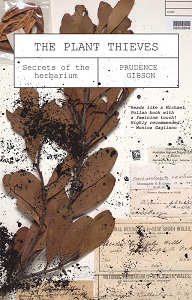
The National Herbarium of New South Wales, Australia, acts as setting and springboard for Prudence Gibson’s narratives about and descriptions of preserved plants. Gibson holds in admirable tension the wonders of the herbarium and the troubling colonialism that assumed authority over Australia’s plants, collecting them without permission, naming and organizing them by European standards. The question of who owns plants hovers in the background.
Gibson spent three years seeking “to find out what plant-human relations really are and what they mean. And what that meaning tells us about the herbarium” (p. xvi).
The chapter on Joseph Banks, for instance, dwells on the irony of banksia, a widespread tree in Australia, being named for the famous English plant collector. Yes, he was an amazing collector, but the plant was there long before he arrived. Gibson describes some current efforts to add plant names used by Indigenous people to the herbarium descriptions. The task is challenging in part because the many Aboriginal groups have different names for the same plants.
The National Herbarium moved to a new site during the years Gibson was working on this project. Plant Thieves includes some lively conversations between Gibson and local women artists creating art for the new building. Throughout Gibson expresses awe at the care given the plant samples in the herbarium.
One chapter recounts a collaboration between botanists and Indigenous Elders to solve a mystery about black beans. These large seeds (also called bogum or Moreton Bay chestnuts, also known as
Castanospermum australe) are toxic, but Indigenous people
process them for use in a bread called damper. (I used Google frequently to translate Australian terms.) Somehow the plant had spread hundreds of miles, puzzling scientists, because this plant does not spread easily. European settlers believed Indigenous people were not organized enough to establish long trade routes, a logical way the plant could have traveled. The Elders told a Songline story of an ancestral spirit carrying a bag of beans many miles. When scientists examined plants along the route described in the story, they found bean plants everywhere. This evidence supports the presence of a highly developed Indigenous social organization.
The Plant Thieves reads very easily. Gibson brings to life the many people she meets and provides much intriguing information about plants and their ties to the herbarium.